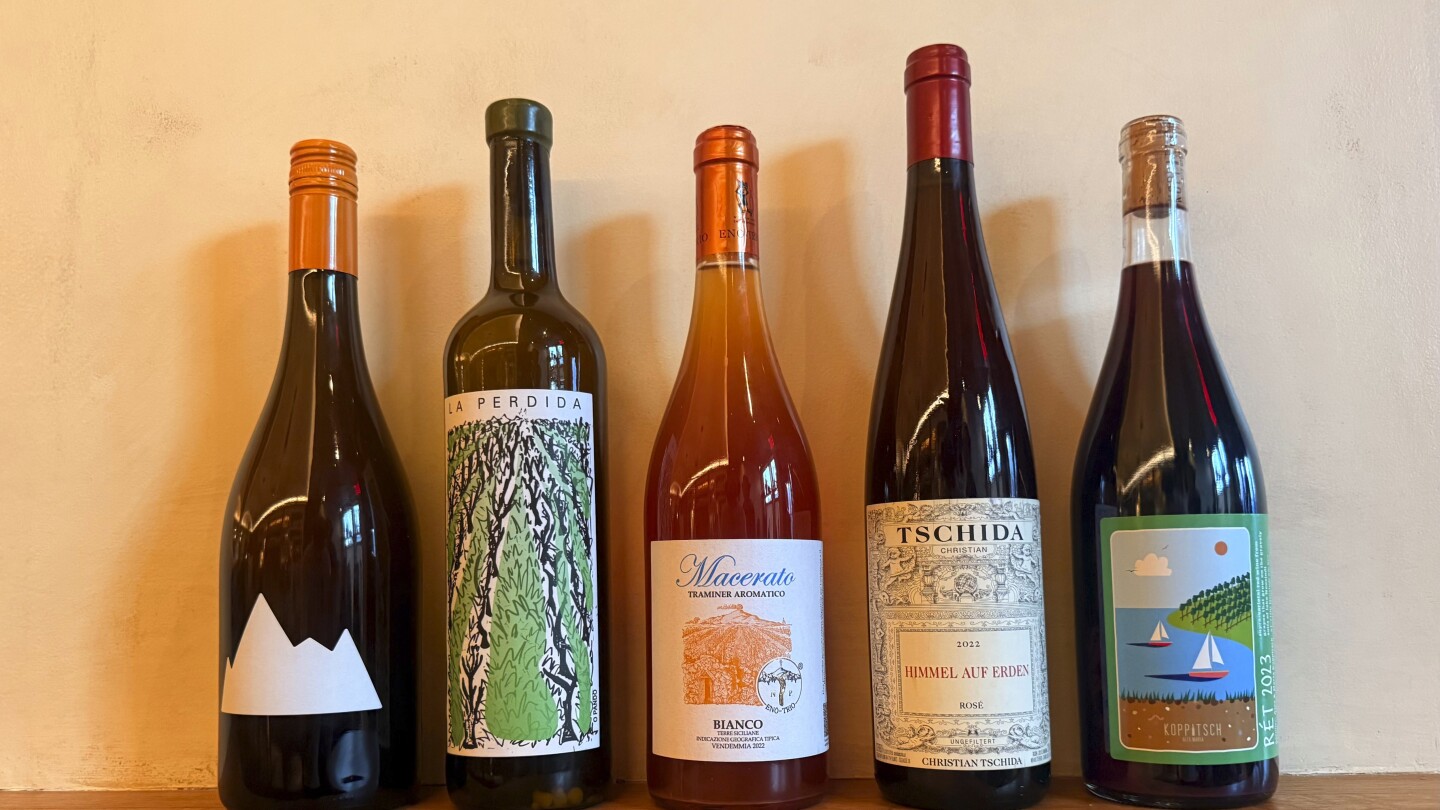If you are a wine lover, you may have seen, or even tried, a natural wine. They’ve been gaining a following for years, and the holidays could be a nice time to see what they’re about.
What exactly is a natural wine? And what makes them special?
Natural wines are produced with minimal human intervention. The grapes are generally grown organically, and the winemaking process eschews additives, commercial yeasts and excessive sulfites.
Fans say it is wine in its purest form: a reflection of the grape, the terroir and the vintage. It’s the way wine was made for thousands of years, before commercial wine-making existed. For these reasons, natural wine has gone beyond just a category of wine, evolving into more of a winemaking philosophy.
But the definition of “natural wine” isn’t fixed. Most are not labeled or “authenticated,” so you might have to do a little investigation. (In France, some might be labeled “Vin Method Nature,” a designation also adapted by the EU in 2022.) Ask your wine purveyor or sommelier to point you in the right direction.
In the U.S., you might see wines referred to as Zero Zero, which refers to zero additives and zero sulfites added.
Alice Feiring is the author of six books on wine and the creator of The Feiring Line on Substack. She says that if you drink these wines regularly, you develop an instinct for identifying a natural wine: “Generally, in the mouth, the wine is more alive and open.”
Natural wines’ distinctiveness, for her, “includes everything from the people and soils to the bottle and glass.”
Makers of natural wine take a very personal approach
Oenophiles attracted to natural wines appreciate the winemakers’ efforts, which usually involve farming on small plots of land and limiting production. Winemakers sometimes focus on grapes indigenous to particular areas, perhaps ancestral varietals that may not be as well known or commonly used.
Maggie Dahill is beverage director at the restaurants Miss Ada and Theodora in Brooklyn, N.Y., which have robust natural wine programs. She characterizes natural wine as “honest wine made by real people, with transparency throughout the winemaking process.”
Dahill is drawn to the experimental nature and creativity, the intentionality behind the making of natural wines. She also appreciates the winemakers’ attention to sustainability.
Some natural wines might need some judiciously added sulfur to survive and be saleable, but “where there IS intervention, it’s an honest and open part of the wine’s story,” Dahill says.
And she likes that “the lack of legal definition forces us to keep having the conversation about what a natural wine is.”
Running the gamut in quality and taste
“Sure, some natural wines can be cloudy, funky or just plain weird, but plenty of others will be just as exceptional as premium wines made with more commercial methods,” says Dahill.
Often, there is a freshness to the taste, and you might detect some slight fizz; the natural carbon dioxide remains as a natural preservative, but it dissipates with air. And natural wines are often unfiltered, giving them that cloudy appearance.
Wines from natural producers are different every year, and might even vary bottle to bottle. For fans, this is all part of the excitement.
At Kings Country Wines, a curated wine shop in Brooklyn, a sign with a color key indicates which wines are certified organic, sustainable, biodynamic, made with minimal sulfites, and/or Natural — with Natural defined as “Whatever that means.”
A little bit of natural bubbly for New Years?
In the world of natural wines, you may come across a Pet Nat. This is a sparkling wine, short for pétillant naturel. Feiring says it’s most likely the first sparkling wine ever made. Wine that has not finished fermenting is bottled, trapping the carbon dioxide, which gives the sparkle. It’s a far less complex process than making Champagne.
Orange wines are another category that is often considered natural. These are wines made with grapes usually used for white wine, but which are left in contact with their skins for longer during the fermentation process, giving them a distinctive color.
One way to seek out natural wines is to look on the back of the bottle for the importer’s name. Feiring recommends winemakers like Selections, José Pastor, Louis/Dressner Selections, Coeur, and Jenny & Francois. Or look for producers who specialize in natural wine: Dahill recommends Milan Nestarec (Czechia), Strekov 1075 (Slovakia), Oriol Artigas and Vinyes Tortuga (Catalunya), and Lammidia (Italy).
Natural wine tells a story of time and place. Such a nice way to brighten up your holiday wine drinking and gift giving, and support smaller winemakers who are putting in the work!
___
Katie Workman writes regularly about food for The Associated Press. She has written two cookbooks focused on family-friendly cooking, “Dinner Solved!” and “The Mom 100 Cookbook.” She blogs at https://themom100.com/. She can be reached at [email protected].
___
For more AP food stories, go to https://apnews.com/hub/recipes.



